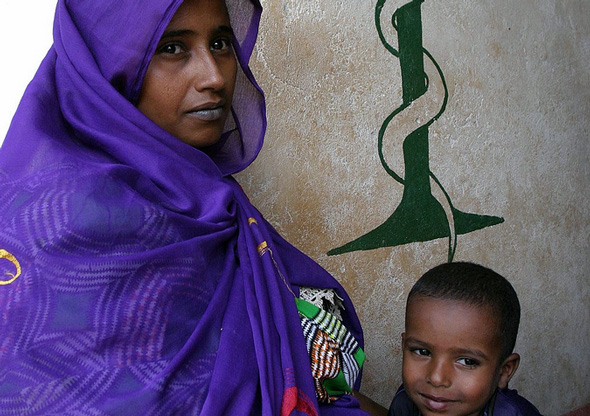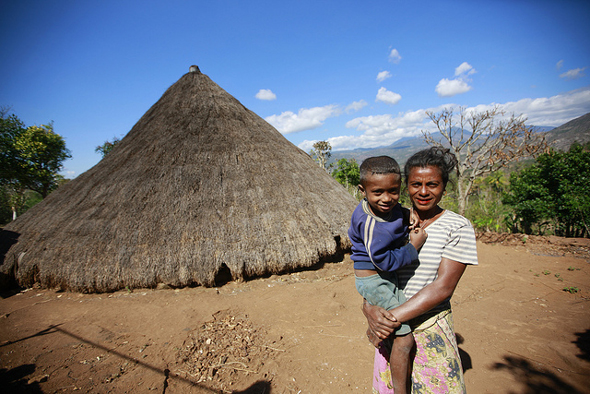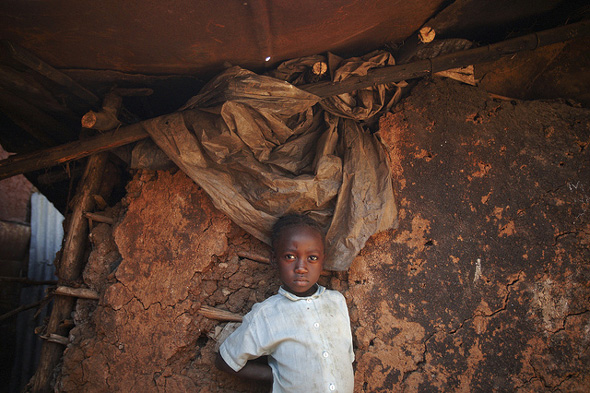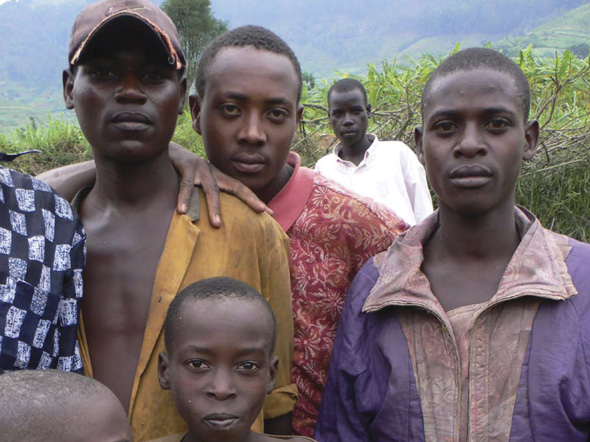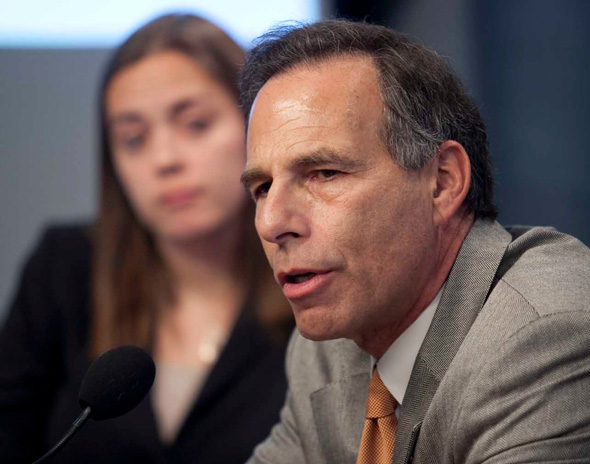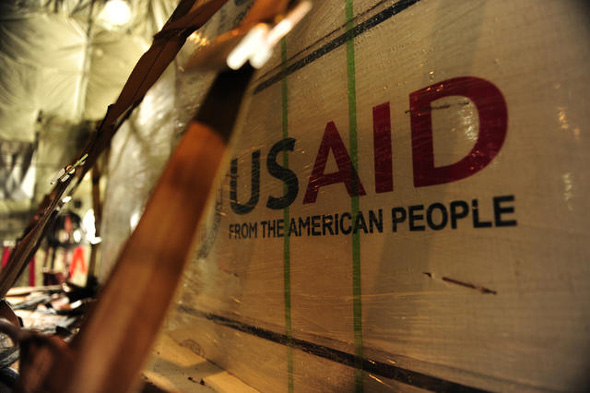-
Women’s Health: Key to Climate Adaptation Strategies
›
The discussion about family planning and reproductive rights “needs to be in a place where we can talk thoughtfully about the fact that yes, more people on this planet – and we’ve just crossed seven billion – does actually put pressure on the planet. And no, it is not just black women or brown women or Chinese women who create that problem,” said Kavita Ramdas, executive director for programs on social entrepreneurship at Stanford University. [Video Below]
-
Reaching Out to Environmentalists About Population Growth and Family Planning
›“Promoting women’s empowerment is an effective strategy for looking at climate and the environment but also is important in its own right,” said the Sierra Club’s Kim Lovell at the Wilson Center on February 22. “Increasing access to family planning for women around the world is a climate adaptation and climate mitigation solution.” [Video Below] Drawing on research by Brian O’Neill (National Center for Atmospheric Research) and others Lovell explained that meeting the unmet need for family planning around the world could provide up to 16 to 29 percent of the emissions reductions required by 2050 in order to avoid more than two degrees of warming (the target set by nations to prevent the most damaging effects of climate change).
Drawing on research by Brian O’Neill (National Center for Atmospheric Research) and others Lovell explained that meeting the unmet need for family planning around the world could provide up to 16 to 29 percent of the emissions reductions required by 2050 in order to avoid more than two degrees of warming (the target set by nations to prevent the most damaging effects of climate change).
For environmentalists and those concerned with climate change, “sometimes the idea has been that population is toxic, that we can’t talk about population growth,” said Nancy Belden of Belden Russonello and Stewart Consulting, but the results of a recent survey and several focus groups conducted in association with Americans for UNFPA demonstrate that there is great potential for engaging the environmental community in such a discussion.
Belden and Lovell were joined by Kate Sheppard from Mother Jones to discuss how the population and environment communities can come together in the lead-up to the Rio+20 UN sustainable development conference.
Besides providing a basic health commodity, empowering women through access to family planning also improves adaptation outcomes, said Lovell. “Climate change is already happening and women and families around the world are suffering from the effects of water scarcity [and] of erratic weather patterns,” she said. But “when women have the ability to plan their family size and have more choices about their families and about their reproductive health and rights, that makes it easier to adapt to those climate change effects that are already taking place.”
Resonating With Environmental Priorities
“The people who really care about the environment are generally the same people who care about access to contraception and birth control and family planning…they’re a ready audience to hear about these connections and they’re a ready audience to take action about them,” said Kate Sheppard. Reproductive rights issues are something that people can really connect with, she said; “most women, most men too…understand why it’s an important issue and they’ve understood it in their own life and they have [a] very strong response to it.”
When we approach the linkages between environment and population, said Sheppard, it is important to recognize the role of empowering language – language about access to services, education, and resources for women.
The aim of the Americans for UNFPA survey was to find out whether environmentalists can be engaged in discussions of population issues such as family planning and international voluntary contraception, and if so, how?
The results show that “environmentalists are ready to talk about population, they’re ready to listen – it’s not toxic,” said Belden. She outlined three key findings:
First, environmentalists prioritize the environment but they also give a high priority to empowering women, said Belden. “Population pressures are seen as an environmental problem…they don’t dismiss it,” yet the “strongest framework that we could come up with…for engaging people on the issues around voluntary family planning and contraception focuses on women.”
Second, the environmental community is relatively optimistic about the potential outcomes of family planning programs and of foreign aid in general. When queried, half of the environmentalists strongly supported the idea of U.S. contributions to UN programs that provide voluntary access to contraception in developing countries, said Belden.
When asked to mark their top priority among a list of possible outcomes of providing voluntary access to contraception, 47 percent of the environmentalists selected either “improving living conditions for women and their families” or “ensuring women have options and can make reproductive decisions” as their top priority. While a significant number are also concerned about stalling population growth, this integrative focus on improving the lives of women and their families is heartening, said Belden.
In the Run-Up to Rio+20, More Than Pop
One point that all three speakers stressed is the need to integrate consumption into the integrated population message. In her survey work, Belden found that “if you don’t talk about consumption in the same breath, [environmentalists] start wanting to put it in there because otherwise…this is someone blaming others.”
Lovell similarly highlighted that “if we’re working to ensure a sustainable planet for future generations to come, we have to think about consumption and population.” For instance, “the United States makes up five percent of the world’s population but consumes 25 percent of the world’s resources,” she said.
Said Sheppard: “It’s not simply a problem that the numbers of people here on the Earth are going up, it’s a problem of how people, especially here in the U.S., live.”
It is imperative – especially from a sustainable development standpoint – that while working towards integrating environment and population we remain focused on a message that includes “using less but still having a high quality of life” here at home, said Sheppard.
Event ResourcesSources: Proceedings of the National Academy of Sciences.
Photo Credit: “Timorese Traditional Home,” courtesy of United Nations Photo. -
Programming to Address the Health and Livelihood Needs of Adolescent Girls
›
“There are 750 million adolescent girls in the world today, and this is by far one of the world’s most marginalized and vulnerable demographics,” said Denise Dunning, the Public Health Institute’s program director for emergency contraception in Latin America during a February 2 panel at the Wilson Center. Dunning, who also leads the Adolescent Girls’ Advocacy and Leadership Initiative (AGALI), was joined by Margaret Greene, director of Greeneworks, and Jennifer Pope, the deputy director of sexual and reproductive health at Population Services International, to discuss how to better reach underserved adolescent girls in developing countries with health and livelihood programs.
-
Stuck: Rwandan Youth and the Struggle for Adulthood (Book Preview)
›
Several years ago, I wrote that the central irony concerning Africa’s urban youth was that “they are a demographic majority that sees itself as an outcast minority.” Since that time, field research with rural and urban youth in war and postwar contexts within and beyond Africa has led me to revise this assertion. The irony appears to apply to most developing country youth regardless of their location.
-
Political Demography: How Population Changes Are Reshaping International Security and National Politics (Book Launch)
›
“The world’s population is changing in ways that are historically unprecedented,” said Jack Goldstone, George Mason University professor and co-editor of the new book, Political Demography: How Population Changes Are Reshaping International Security and National Politics. [Video Below]
-
Caryle Murphy for the Middle East Program
Saudi Arabia’s Youth and the Kingdom’s Future
›Saudi Arabia is passing through a unique demographic period. …Approximately 37 percent of the Saudi population is below the age of 14. Those under age 25 account for around 51 percent of the population, and when those under 29 are included, young people amount to two-thirds of the kingdom’s population. (In the United States, those 14 years and younger are 20 percent of the population; those 29 and below make up 41 percent.)
-
Paul Francis, Deirdre LaPin, and Paula Rossiasco for the Africa Program
Securing Development and Peace in the Niger Delta: A Social and Conflict Analysis for Change
›Excerpted below is the introduction by Steve McDonald. The full report is available for download from the Wilson Center’s Africa Program.
This study, Securing Development and Peace in the Niger Delta: A Social and Conflict Analysis for Change, draws together a vast range of information about Nigeria’s delta region not previously available in a single publication. It richly illuminates the social history and underlying causes of unrest in the area. Equally important, the study adds to the empirical research available to us about conflict prevention and approaches to post-conflict reconstruction in regions harmed by the extraction of natural resources.
It examines the complex interactions between the social, political, economic, environmental, and security factors that drive and sustain conflict. It also reviews the main policy responses and initiatives that have already been brought to bear in the delta and maps out key policy options for the future.
Encouragingly, the study finds that many of the elements of sustainable pathways to development and peace already exist or can readily be realized. What is needed is a systematic framework and, most critically, a leadership consensus and the political will to marshal them. Nigeria’s development partners are already showing a renewed commitment to support solutions to the delta’s challenges. Imaginative dialogue and partnership between them and with critical stakeholders in government, the private sector, civil society, and communities holds the promise of yielding effective strategies for sustainable development and peace that befit the region’s unique character and history.
This study, then, emerges at a time of particular opportunity and hope. And yet it must be noted that the present time also holds a considerable potential risk. Without appropriate and thoughtful action, the legitimate aspirations of the citizens of the delta and their compatriots in Nigeria as a whole will, yet again, go unrewarded. For the Niger Delta today, any plan or project must be rooted in practical and active understanding of the origins and risks of conflict in order to sustain the momentum of peaceful development and avoid planning that does not take into account the dynamics of conflict and its core causes.
Finally, the importance of the issues dealt with in this study extends beyond the delta or Nigeria as a nation. They are much broader when viewed from Nigeria’s place in the sub-region and the world economy. While the delta is unique, there are also lessons that can be learned for other conflict situations, and especially for the expanding number of new oil producing countries along the Guinea coast. For all, the key lesson is that peace is hard work. It requires a leadership committed to equitable government, dialogue with citizens, and sustainable development.
Download the full report from the Wilson Center. -
Is Foreign Aid Worth the Cost?
›“Is foreign aid worth the cost? That’s not really the question unless you’re Ron Paul,” quipped Carol J. Lancaster, dean of the School of Foreign Service at Georgetown University, at the Wilson Center on January 23. “The real questions are: What do we want to accomplish with our foreign aid? Where should it go? And in what form?” [Video Below]
Lancaster noted that following World War II, foreign aid became “a two-pronged instrument – one as an instrument of the Cold War and the other as an extension of American values.” It has been a very “intense marriage” between the two, he said, “with one side up and the other side down at different times, as any marriage tends to be.” Truman convinced Congress to provide aid to Greece and Turkey in 1948 to combat communism, and he was able to gain approval for the Marshall Plan by “scaring the wits out of Congress” about the communist threat.
Aid Under Fire
Congressman Donald Payne (N.J.), who is the ranking Democrat on the House Foreign Affairs Committee’s Subcommittee on Africa, agreed that the Cold War was the principal reason for our foreign aid programs after World War II, as we provided hundreds of billions of dollars in aid to our supporters around the world. But, “It’s different today,” he added. “Since the end of the Cold War, more funds are going for humanitarian and development assistance, but it is still directly linked to our national interests. One in five American jobs are tied to U.S. trade, and the growth of our trading partners is our growth as well.”
Payne cautioned that there is “a new group in the House of Representatives who think we should step out of the world. They’ve told their constituents they are going to cut the budget, and foreign aid is an easy target.” Payne noted that polls show the American people think one-quarter or more of the federal budget goes to foreign aid when it is little more than one percent.
Nevertheless, there has been bipartisan support for former President Bush’s HIV/AIDS initiative in Africa which is showing remarkable results in reducing deaths from the disease. Payne added that aid to Africa is showing results in the number of economies that are doing well despite the global economic downturn.
Payne expressed frustration with the inability to enact a foreign aid authorization bill in the last several Congresses because the measures became weighted down with all manner of policy riders that were both partisan and controversial. Consequently, our foreign relations operations are solely dependent on the annual appropriations bills which tend to become encumbered as well with troublesome riders.
The Dangers of “Nation Building”
Charles O. Flickner, Jr., a 28-year Republican staff member on the Senate Budget Committee and then the Foreign Operations Appropriations Subcommittee in the House, presented a more skeptical view, saying foreign aid is not worth the $35 billion it is costing us each year, even though some of the programs have been successful and should be continued. The biggest problem in recent years, he said, has been the amount of money wasted on projects in Iraq and Afghanistan without adequate planning or execution. Money was being virtually shoveled out the door in amounts the host countries did not have the capacity to absorb, said Flickner, and as a consequence we have witnessed a lot of failed projects and corruption.
Smaller projects, which the U.S. government and private aid donors are better at, have a greater chance for success because they do not overwhelm the capacities of host countries. He cited some of the scholarships and technical training programs available for foreign nationals as being among the most worthwhile in building internal leadership capacity for the future in developing countries.
Rajiv Chandrasekaran agreed on the amount of wasted aid dollars being spent in Iraq and Afghanistan, which he has covered as a foreign correspondent for The Washington Post. He told the story of a small, dirt-poor town in Afghanistan he visited in where the bazaar was bustling with new shops and goods, and people were freely spending money on modern electronics, motor bikes, and clothes. The town was the beneficiary of a massive U.S. aid program that provided seed money for farmers to grow crops and created day labor jobs for the residents of the area. A contractor was authorized to spend $30 million on the economic development of the town during the U.S. counterinsurgency surge and that came to roughly $300 per person. It was clear to the USAID official on the ground and to the reporter that the experiment would not be sustainable over the long-term, even though there was a temporary sense of economic activity and prosperity.
Future Vulnerabilities
The panel seemed to agree that it was unfair to blame USAID for these failures since they were thrown into situations overnight they were not prepared to manage in countries that were not capable of absorbing the assistance being directed at them – all in the midst of ongoing conflict. The real test of whether the new directions being charted by the Obama Administration will work will be on the smaller, more manageable projects in which the host countries have a greater role in shaping and implementing.
Lancaster listed four vulnerabilities in the future course of U.S. foreign aid that should be avoided, including trying to merge our various interests through the State and Defense Departments with our aid programs in countries like Pakistan, where the institutions are weak and corrupt; the danger of creating an entitlement dependency through funding of HIV/AIDS drugs, where we will be guilty of causing deaths if we reduce funding; the danger of attempting to undertake too many initiatives at once, such as food aid, global health, climate change, and science and technology innovations, while simultaneously trying to reform the infrastructure of USAID; and trying too hard to demonstrate results from aid given the difficulty of disentangling causes and effects and gauging success over too short a time frame.
Event Resources:
Don Wolfensberger is director of the Congress Project at the Wilson Center.
Showing posts from category From the Wilson Center.


